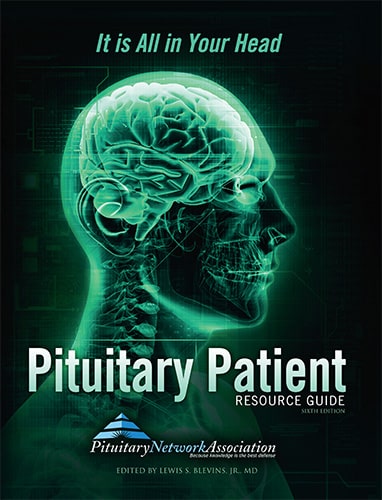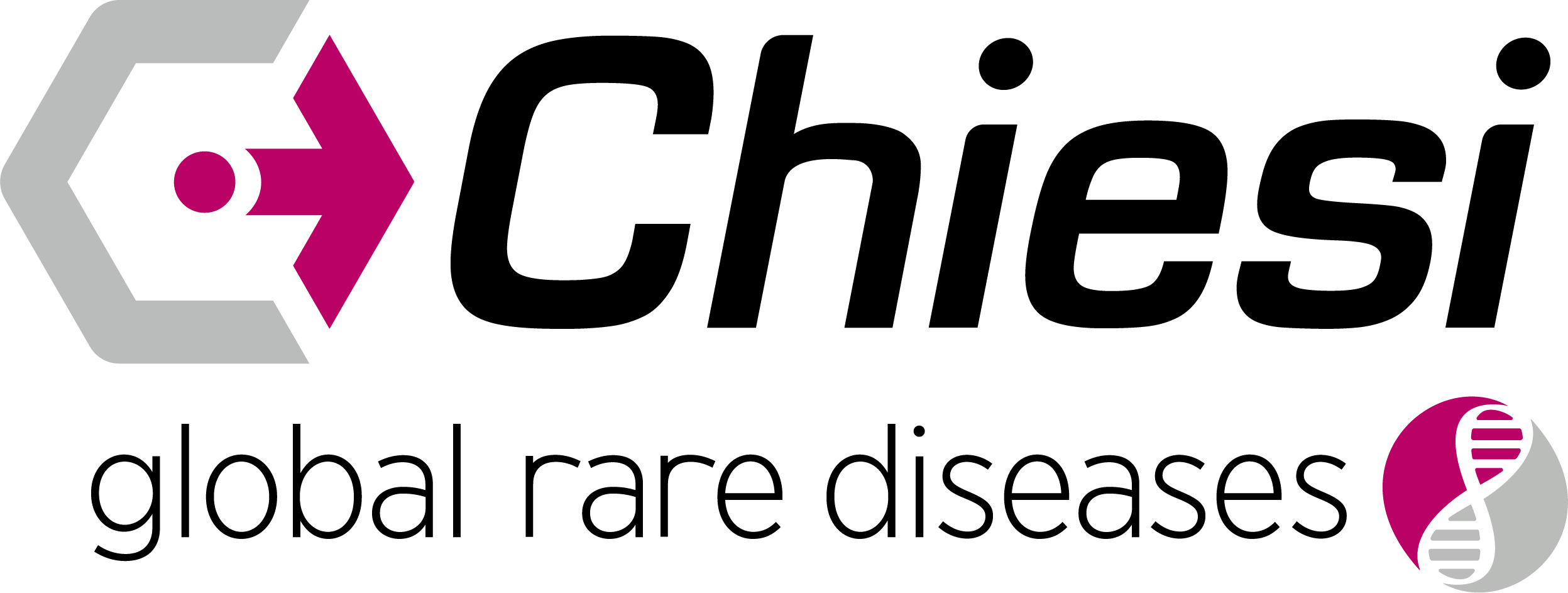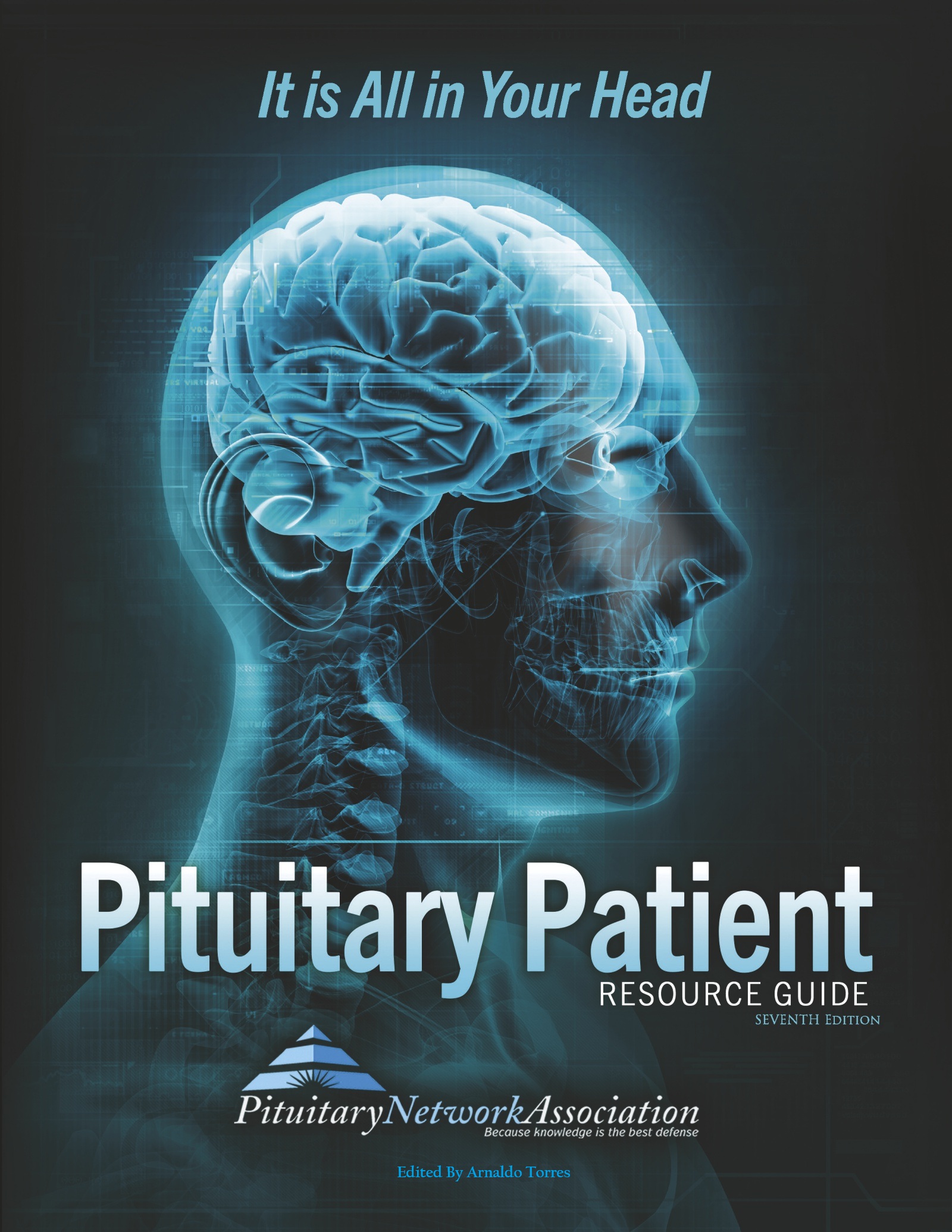News Articles February 2022
Written on 04 February 2022.
News Articles October 2024
New acromegaly drug on the horizon
A new drug for treatment and long-term maintenance therapy for acromegaly is now on the horizon. Crinetics Pharmaceuticals recently submitted its first new drug application (NDA) to the U.S. Food and Drug Administration for paltusotine, which is a once-daily oral selectively-targeted somatostatin receptor type 2 nonpeptide agonist.
Crinetics says researchers used data from from 18 clinical trials in the application, including two Phase 3 trials that evaluated paltusotine for acromegaly in medically untreated and treated patients. Patients tolerated the treatment well, the medication achieved biochemical control by maintaining IGF-1 levels and improved patients’ symptoms compared to placebo. The company says it expects to hear back from the FDA by December.
Paltusotine, is the first drug of its type to complete Phase 3 clinical development for acromegaly and is now in Phase 2 clinical development for carcinoid syndrome associated with neuroendocrine tumors. Read the company’s press release here.
Can machine learning to predict hormone deficiency after pituitary surgery?
A study featured on Nature.com used machine learning algorithms to predict whether patients would develop arginine vasopressin deficiency after transsphenoidal surgery to remove a pituitary adenoma. Read more here: https://www.nature.com/articles/s41598-024-72486-w
Pituitary apoplexy strikes groom on wedding day
An article in People.com tells the story of a groom in England who had to leave his wedding reception early due to a severe headache – one that turned out to be a hemorrhaging pituitary tumor. Read more here: https://people.com/groom-migraine-wedding-day-tumor-popped-8718083
Researchers try to make synthetic oxytocin for pain relief
An article in the Focus.news looks at efforts to replicate the hormone oxytocin in the lab – in an effort to develop a painkiller that would be safer than opioids. Read more here: https://www.thefocus.news/lifestyle/scientists-are-hoping-to-replicate-the-cuddle-hormone-for-healthy-long-term-pain-relief/
PNA Highlights September 2024

PNA Spotlight: Phillip Cem Cezayirli, MD
This month the PNA Spotlight focuses on neurosurgeon Dr. Philip Cem Cezayirli, part of the Haynes Neurosurgical Group in Birmingham, Alabama. Dr. Cezayirli is affiliated with four local medical centers: Princeton Baptist, Shelby Baptist, Grandview, and Brookwood Baptist Medical Centers.

Dr. Philip Cezayirli
He is a board-certified neurosurgeon with a focus on neurosurgical oncology and spine surgery and is licensed to practice neurosurgery in Alabama.
He earned his MD at the University of Alabama at Birmingham School of Medicine in Birmingham, Alabama. He spent a year studying with Dr. Uğur Türe at Yeditepe University and Hospital in Istanbul, Turkey. He did his neurosurgery residency at the Albert Einstein College of Medicine in Montefiore, Bronx New York. And he completed a neurosurgical oncology fellowship at MD Anderson Cancer Center in Houston, TX.
Dr. Cezayiri was kind enough to speak with the PNA about a range of issues. Here is the conversation, edited for clarity.
Expertise needed for tumors that invade the pituitary’s protective layer
The pituitary gland is surrounded by the cavernous sinus and internal carotid artery. A thin layer of connective tissue separates the sinus and artery from the pituitary gland. Pituitary tumors sometimes invade this protective layer, called the medial wall of the cavernous sinus (MWCS).
That infiltration puts pituitary tumors in close proximity to the internal carotid artery and to cranial nerves, significantly complicating treatment approaches — especially when a tumor needs to be entirely removed to achieve cure.
“Standard procedure would be to resect the pituitary tumor up to the medial wall, to avoid damaging the artery. But if there’s tumor in the wall, the patient won’t be cured,” says Mayo Clinic neurosurgeon Dr. Kaisorn L. Chaichana.
MWCS infiltration is more common with functioning adenomas, such as prolactinomas and tumors that cause acromegaly or Cushing’s disease. Incomplete removal of these tumors can lower the chances of hormone control and increase the risk of tumor regrowth.
Fortunately, neurosurgeons are learning how to meet these challenges. Surgically removing part of the MCWS, to completely resect pituitary tumors, can improve outcomes.
“It’s a formidable challenge,” Dr. Chaichana says. “It takes people well-versed in the surgery, and who have experience, to know where they can open that medial wall. If you’re too far to the side — even by less than a millimeter — you would cut the carotid artery, which would be catastrophic.”
Mayo Clinic neurosurgeons use Doppler ultrasound to guide entry into the cavernous sinus, allowing selective resection of the MWCS. “We listen to the sound of the carotid artery, find a space within the medial wall where the artery isn’t present, and make a small slit in that opening,” Dr. Chaichana says. “Then we remove the wall from the carotid artery.”
It’s also important to limit packing of the cavernous sinus after surgery. “Overpacking that site can cause pressure and injury to the cranial nerves, which could lead to facial numbness and eye motion problems,” Dr. Chaichana says.
A multidisciplinary team that includes ENT/head and neck surgeons, as well as neurosurgeons, provides additional anatomical expertise.
“Very few centers do this procedure. But we’ve seen higher rates of remission for functional tumors when we take out that wall,” Dr. Chaichana says. “For a lot of functional tumors, selective resection of the MWCS can mean the difference between tumor remaining and tumor being gone — and therefore, cure or not cure.”
Count on your Xeris CareConnection™ Team for unparalleled Cushing’s Support
Cushing’s can be challenging, but there is support so patients can feel like themselves again. The main goal of treating Cushing’s is to get cortisol levels back to normal. This Pituitary Awareness Month, Xeris Pharmaceuticals® is highlighting the importance of one-on-one support for patients living with Cushing’s Syndrome and support for HCPs treating Cushing’s Syndrome.
Sign up to get dedicated support:
Patients: Sign up for support | Recorlev® (levoketoconazole)
HCP’s: Connect with Xeris support | RECORLEV® (levoketoconazole)
Have more questions? Call for more support at 1-844-444-RCLV (7258)
Copyright © 2024 Pituitary Network Association All rights reserved.
Disclaimer: PNA does not engage in the practice of medicine. It is not a medical authority, nor does it claim to have medical expertise. In all cases, PNA recommends that you consult your own physician regarding any course of treatment or medication.
Our mailing address is:
Pituitary Network Association
P.O. Box 1958
Thousand Oaks, CA 91358
(805) 499-9973 Phone - (805) 480-0633 Fax
Email [email protected]
You are receiving this Newsletter because you have shown interest in receiving information about our activities.
If you do not want to receive any more emails from PNA, Unsubscribe.
News Articles September 2024
Musician battles craniopharyngioma
An Irish DJ and music producer with the group Bicep named Matt McBriar is recovering after surgery for a large craniopharyngioma. Read more: https://www.msn.com/en-us/health/other/bicep-s-matt-mcbriar-treated-for-large-and-pretty-rare-brain-tumour/ar-AA1oLDvU?apiversion=v2&noservercache=1&domshim=1&renderwebcomponents=1&wcseo=1&batchservertelemetry=1&noservertelemetry=1
Social media obsession with “cortisol face” masks true pituitary origin
The term “cortisol face” is sweeping social media, with influencers claiming that stress causes high cortisol levels and leads to puffy cheeks, or “moon facies” that can be treated with diet, creams or lifestyle changes. But doctors say this is misinformation – and true moon facies come from a pituitary disorder. Read more: https://athletechnews.com/cortisol-face/
New study challenges link between cadaver growth hormone and Alzheimer’s
A new study raises objections to past research that linked cadaver-derived human growth hormone with Alzheimer’s disease. Read more: https://www.thetransmitter.org/alzheimers-disease/skeptics-challenge-claims-of-alzheimers-disease-transmission-via-growth-hormone/
Pituitary story: At ten years old, 6’3” boy battles gigantism
A story in the Daily Mail recounts the case of a ten-year-old boy from the U.K. names Jayson who stands 6’3” tall and battles pituitary gigantism. Read more: https://www.dailymail.co.uk/femail/article-13489681/rare-condition-harsh-realities-tallest-kid-world.html
Pituitary story: 62-year-old Indian man undergoes transsphenoidal surgery
An article in City Air news looks at the case of a man in India who had transnasal transsphenoidal surgery to remove a pituitary tumor. Read more:
September 2024 Research Articles
Pituitary Adenoma
Granulomatous Mastitis: An Initial Presentation of Undiagnosed Prolactinoma.
Induction of apoptosis by oridonin in nonfunctioning pituitary adenoma cells.
Pituitary Surgery
Intraoperative Takotsubo Syndrome.
Acromegaly
Unlocking the Genetic Secrets of Acromegaly: Exploring the Role of Genetics in a Rare Disorder.
Cushing’s
Pituitary Neuroendocrine Tumors
Pituitary Neuroendocrine Tumors in Multiple Endocrine Neoplasia.
Hormonal Health
An Overview of Cardiovascular Risk in Pituitary Disorders.
PNA Spotlight: Phillip Cem Cezayirli, MD

Dr. Philip Cezayirli
This month the PNA Spotlight focuses on neurosurgeon Dr. Philip Cem Cezayirli, part of the Haynes Neurosurgical Group in Birmingham, Alabama. Dr. Cezayirli is affiliated with four local medical centers: Princeton Baptist, Shelby Baptist, Grandview, and Brookwood Baptist Medical Centers.
He is a board-certified neurosurgeon with a focus on neurosurgical oncology and spine surgery and is licensed to practice neurosurgery in Alabama.
He earned his MD at the University of Alabama at Birmingham School of Medicine in Birmingham, Alabama. He spent a year studying with Dr. Uğur Türe at Yeditepe University and Hospital in Istanbul, Turkey. He did his neurosurgery residency at the Albert Einstein College of Medicine in Montefiore, Bronx New York. And he completed a neurosurgical oncology fellowship at MD Anderson Cancer Center in Houston, TX.
Dr. Cezayiri was kind enough to speak with the PNA about a range of issues. Here is the conversation, edited for clarity.
Tell me about your practice – what do you want pituitary patients to know?
I am from Birmingham, Alabama and work here now, but I did med school here at U.A.B., and then I did my training for residency up in New York at Albert Einstein College of Medicine and Montefiore Medical Center. Then I did a fellowship in Istanbul, Turkey, with Professor Mahmut Gazi Yaşargil and his mentee, Dr. Uğur Türe, in microsurgical neuroanatomy and micro neurosurgery training.
Later, I went back to my chief residency year at Einstein at Montefiore where I trained with Dr. Vijay Agarwal, a pituitary specialist who trained with the Mayo Clinic. During my fellowship in neurosurgical oncology at MD Anderson in Houston, Texas, I worked with neurosurgeons who focus on cancers of the brain, spine, skull base and nerves. We spend a third of our time working on the skull base, a large part of it, pituitaries.
What do you want patients to understand about your approach?
I think the important thing is our job is to help the patient, and so sometimes that means we don’t even need to operate. We can just watch the problem. Then sometimes, if it’s causing issues, or we think it’s going to cause issues, then we kind of have to weigh the risks and benefits with the patient. We try to use a patient-first approach. Just because we see something on imaging, that doesn’t necessarily mean we have to do surgery.
We focus on what the patient wants and needs and where they are in their life and try to balance all that. We are comprehensive and highly involved with the patient’s workup. For instance, we’ve had patients with a fairly large lesion, but they didn’t notice any vision problems. So, we waited to make sure. We got the labs and got the vision checked. The vision was completely normal, even though it looked like it was pushing on the nerves. And the labs actually came back showing that that the patient had a prolactinoma. So the patient ended up getting medical treatment with for the prolactinoma, and now the lesions smaller and the patient is completely fine.
We had another patient who was pregnant and had headaches. She got an MRI which showed a lesion in the pituitary, pushing on the nerves. But her vision was fine, and since she was in the third trimester, we watched it, and she delivered their baby. A repeat MRI three months later showed the pituitary is normal size now. So, we’ll continue to watch patients like that, just to make sure, but we don’t always have to do surgery. Our goal is to do right by the patient and focus on what they need and want.
I think it’s important with pituitary care in particular, that we use a team-based approach, and rather than it being just a neurosurgeon, an endocrinologist, an eye doctor or an E-N-T alone. We all work together to improve our patients’ outcomes.
What are the misconceptions out there that you want to clear up?
I think that there are people who may be afraid to get imaging, or afraid to see a neurosurgeon, because they think if we find something on the imaging, they’ll be forced to do surgery. That’s not how we work.
You know the old adage, when you’re a hammer, everything looks like a nail…
Right? And maybe 30 or 40 years ago, that might have been the case, especially when MRIs first came out, we would find lesions, and think that we had to operate on it. But now we know a lot more. And so, I don’t think there’s much downside to getting imaging or seeing a neurosurgeon when in doubt. Especially if you go to someone who has experience in this and understands the natural history of the diseases. No one is going to insist on surgery.
Also, there’s no downside to getting your vision checked regularly. A lot of times with pituitary problems, the vision issues can be so subtle and so slow that that you might miss them. It’s better to closely watch your health with your endocrinologist, primary care doctor, eye doctor and neurosurgeon, who are all of what symptoms can be there rather than avoiding diagnosis out of fear of needing surgery. It is much easier to preserve vision when people are doing well, than when the vision has been lost for a long period of time.
Why are you a member of the PNA? Why do you think it’s a worthy venture?
I think it’s good to have an official resource for people with a pituitary lesion and to have a support group. It’s very important for patients to know where to go and who to see and how to follow up. It’s very nice that the PNA maintains a provider directory of people who focus on lesions in the pituitary. An official, respected resource is important, so people don’t believe everything they read on the internet or social media.
Reach Dr. Cezayirli:
Haynes Neurosurgical Group
Cell: 2054825198
Office: 2057878676
Fax: 2057857944u
Email: [email protected]
Website: https://haynesneurosurgery.com
Address:
801 Princeton Ave SW
P. O. B. I, Suite 310
Birmingham, AL 35211-1307
PNA Highlights August 2024

“The human body is the best picture of the human soul.” – Tony Robbins
PNA Medical Corner:
Endogenous Cushing’s and Cancer
Dr. Maria Fleseriu

Dr. Maria Fleseriu
This month the PNA Medical Corner features a study co-authored by Maria Fleseriu, a longtime member of the PNA and Professor of Endocrinology and Neurological Surgery and Director of the Pituitary Center at Oregon Health & Science University. The study finds that endogenous Cushing’s Syndrome is linked to higher risk of cancer.
Eur J Endocrinol
2024 Jul 27:lvae098.
doi: 10.1093/ejendo/lvae098. Online ahead of print.
Endogenous Cushing’s Syndrome and Cancer Risk
Yaron Rudman 1 2, Maria Fleseriu 3, Laura Dery 2, Hiba Masri-Iraqi 1 2, Liat Sasson 1 2, Tzipora Shochat 4, Shiri Kushnir 5, Ilan Shimon 1 2, Amit Akirov 1 2
Affiliations Expand
- PMID: 39067000 DOI: 10.1093/ejendo/lvae098
Abstract
Objective: Cancer incidence in patients with endogenous Cushing’s syndrome (CS) has never been established. We aimed to assess the cancer risk in patients with CS, as compared with individually matched controls.
Design: A nationwide retrospective matched-cohort study of patients with endogenous CS diagnosed between 2000-2023, using the database of Clalit Health Services in Israel.
Methods: Patients with adrenal carcinoma or ectopic CS were excluded. Patients with CS were matched in a 1:5 ratio, with controls individually matched for age, sex, socioeconomic status, and body mass index. The primary outcome was defined as the first diagnosis of any malignancy following a CS diagnosis. Risk of malignancy was calculated using the Cox proportional hazards model with death as a competing event.
Results: A total of 609 patients with CS and 3018 controls were included [mean age at diagnosis, 48.0±17.2 years; 2371 (65.4%) women]. The median follow-up 14.7 years (IQR, 9.9-20.2 years).Patients with CS had an increased cancer risk, with hazard ratio (HR) of 1.78 (95% CI 1.44-2.20), compared with their matched controls. The risk of malignancy was elevated in patients with Cushing’s disease (251 cases and 1246 controls; HR 1.65, 95% CI 1.15-2.36) and in patients with adrenal CS (200 cases and 991 controls; HR 2.36, 95% CI 1.70-3.29). The increased cancer risk in patients with CS persists after exclusion of thyroid malignancies.
Conclusion: Endogenous CS is associated with increased malignancy risk. These findings underscore the need for further research to establish recommendations for cancer screening in this population.
Keywords: Adrenal; Cancer; Cushing’s disease; Cushing’s syndrome; Malignancy; Pituitary.
© The Author(s) 2024. Published by Oxford University Press on behalf of European Society of Endocrinology. All rights reserved. For commercial re-use, please contact [email protected] for reprints and translation rights for reprints. All other permissions can be obtained through our RightsLink service via the Permissions link on the article page on our site—for further information please contact [email protected].
Reversing vision loss with successful pituitary tumor surgery
Pituitary tumors often cause vision problems. That’s because the optic nerves, which connect the eye to the brain, are located just on top of the pituitary gland. Pituitary tumors can grow
in a way that causes them to compress the optic nerves, leading to vision loss.
“Often the visual loss starts with the peripheral vision and is quite subtle,” says Mayo Clinic neurosurgeon Dr. Maria Peris Celda. “Pituitary tumors usually grow slowly and over time, people can get used to the visual loss. They may not notice the problem until the larger tumor affects their central vision.”
Fortunately, vision loss is often reversed once the tumor is surgically removed. The most common procedure is endoscopic endonasal transsphenoidal surgery. The endoscope, a small surgical camera, and surgical instruments are placed through the nostrils to access the tumor through the sinuses.
“We don’t have to make any incisions in the face,” Dr. Peris Celda says. “Very often, the visual loss either improves or is completely resolved after the operation.” Mayo Clinic was among the first institutions to extensively research the endoscopic through-the-nose approach. Now standard practice, the procedure lowers discomfort and usually requires only an overnight stay in the hospital.
ENT nose and sinus surgeons work alongside neurosurgeons during these procedures. For challenging cases, patients can benefit from the care provided by neuro-ophthalmologists: subspecialists who treat vision issues linked to neurological conditions.
Successful pituitary tumor surgery requires detailed imaging. “The pituitary gland is located in a delicate area, surrounded by very important blood vessels and nerves,” Dr. Peris Celda says. “Using the latest MRI technology allows us to understand the relationship between the tumor, brain and other important structures.”
Vision problems are just one type of complication that pituitary tumors can cause. “A specialized team that focuses on skull base diseases can help provide patients with the best possible outcomes and return to normal quality of life,” Dr. Peris Celda says.
Mayo Clinic is one of the leading pituitary centers in the U.S. For more information, please visit careinfo.mayoclinic.org/pituitary-tumor
Count on your Xeris CareConnection™ Team for unparalleled Cushing’s Support
Cushing’s can be challenging, but there is support so patients can feel like themselves again. The main goal of treating Cushing’s is to get cortisol levels back to normal. This Pituitary Awareness Month, Xeris Pharmaceuticals® is highlighting the importance of one-on-one support for patients living with Cushing’s Syndrome and support for HCPs treating Cushing’s Syndrome.
Sign up to get dedicated support:
Patients: Sign up for support | Recorlev® (levoketoconazole)
HCP’s: Connect with Xeris support | RECORLEV® (levoketoconazole)
Have more questions? Call for more support at 1-844-444-RCLV (7258)
Copyright © 2024 Pituitary Network Association All rights reserved.
Disclaimer: PNA does not engage in the practice of medicine. It is not a medical authority, nor does it claim to have medical expertise. In all cases, PNA recommends that you consult your own physician regarding any course of treatment or medication.
Our mailing address is:
Pituitary Network Association
P.O. Box 1958
Thousand Oaks, CA 91358
(805) 499-9973 Phone - (805) 480-0633 Fax
Email [email protected]
You are receiving this Newsletter because you have shown interest in receiving information about our activities.
If you do not want to receive any more emails from PNA, Unsubscribe.
News Articles August 2024
Pituitary story: Rare 7 cm Pituitary Macroadenoma
A story on The Health Site.com looks at the case of a 63-year-old woman in India who underwent transnasal transsphenoidal surgery to remove a 7 centimeter long pituitary macroadenoma. Read more here: https://www.thehealthsite.com/diseases-conditions/rare-large-tumor-removed-from-63-year-old-womans-pituitary-gland-1111633/
Spontaneous remission of Cushing’s in 14-year-old
A story in Cushing’s Disease News looks at the case of a 14-year-old South American girl with Cushing’s, whose disease went into remission after pituitary apoplexy. Read more: https://cushingsdiseasenews.com/news/rare-case-spontaneous-remission-cushings-disease-reported/
Schizophrenia and a Partially-Empty Sella
An article in Cureus looks at the case of a man whose schizophrenia worsened after 20 years, leading to the discovery of a partially empty sella. Read more: https://www.cureus.com/articles/267874-a-case-report-of-schizophrenia-with-a-partially-empty-sella-related-or-incidental#!/
Once-a-month injectable for acromegaly well-tolerated
The once-monthly octreotide subcutaneous depot finished a 52-week long-term safety study. Researchers found that patients tolerated the drug well and that the drug is was safe and boosted biochemical control. Read more: https://www.medpagetoday.com/endocrinology/growthdisorders/111212
August 2024 Research Articles
Pituitary Tumors
Aggressive Prolactinoma with Progression to Pituitary Carcinoma: A Case Report.
Daniele F, Silvia G, Marta M, Fabio P, Silvia T, Carlo R.Endocr Metab Immune Disord Drug Targets. 2024 Jul 23. doi: 10.2174/0118715303320875240625070226.
Unilateral mydriasis as a first presentation of pituitary macroadenoma.
Ailliet T, Cools A, Van Haecke H, Van den Bruel A.BMJ Case Rep. 2024 Jul 29;17(7):e259597. doi: 10.1136/bcr-2023-259597.
Bhat R, Shankar N, Lu C, Srinivasa R, Rao S, Kalra P.Cureus. 2024 Jun 27;16(6):e63264. doi: 10.7759/cureus.63264. eCollection 2024 Jun.
Boertien TM, Drent ML, Booij J, Majoie CBLM, Stokkel MPM, Hoogmoed J, Pereira AM, Biermasz NR, Simsek S, Veldman RG, Weterings AJ, Vink JM, Tanck MWT, Fliers E, Bisschop PH.Lancet Reg Health Eur. 2024 May 13;42:100923. doi: 10.1016/j.lanepe.2024.100923. eCollection 2024 Jul.
Circadian rhythm disruption and endocrine-related tumors.
Savvidis C, Kallistrou E, Kouroglou E, Dionysopoulou S, Gavriiloglou G, Ragia D, Tsiama V, Proikaki S, Belis K, Ilias I.World J Clin Oncol. 2024 Jul 24;15(7):818-834. doi: 10.5306/wjco.v15.i7.818.
Pituitary Surgery
World premiere: transoral robot-assisted excision for nasopharyngeal ectopic pituitary adenoma.
Louerat S, Hans S, Laroche S, Hyvrard C, Baudouin R.Eur Arch Otorhinolaryngol. 2024 Jul 31. doi: 10.1007/s00405-024-08850-3. Online ahead of print
Ishida T, Kawaguchi T, Ogawa Y, Tominaga T, Endo H.BMC Res Notes. 2024 Jul 30;17(1):212. doi: 10.1186/s13104-024-06866-w.
Zhang X, Wang H, Zhang K, Ma J, He H, Song S, Shao E, Chen B, Yang J, Zhao X, Sui W, Wang M, Liu S, Guo X, Zhu H, Yao Y, Zhong Y, Xing B.Transl Vis Sci Technol. 2024 Jul 1;13(7):20. doi: 10.1167/tvst.13.7.20.
Pituitary Apoplexy
Pituitary apoplexy: a systematic review of non-gestational risk factors.
Kajal S, Ahmad YES, Halawi A, Gol MAK, Ashley W.Pituitary. 2024 Jun 27. doi: 10.1007/s11102-024-01412-0. Online ahead of print.
Mullins J, Bryniarski M.Cureus. 2024 May 28;16(5):e61259. doi: 10.7759/cureus.61259. eCollection 2024 May.
Dopamine in the regulation of glucose and lipid metabolism: a narrative review.
Li Z, Zheng L, Wang J, Wang L, Qi Y, Amin B, Zhu J, Zhang N.Obesity (Silver Spring). 2024 Jul 30. doi: 10.1002/oby.24068. Online ahead of print.
Etiology of combined pituitary hormone deficiency: GNAO1 as a novel candidate gene.
Plachy L, Dusatkova P, Maratova K, Amaratunga SA, Zemkova D, Neuman V, Kolouskova S, Obermannova B, Snajderova M, Sumnik Z, Lebl J, Pruhova S.Endocr Connect. 2024 Jul 1:EC-24-0217. doi: 10.1530/EC-24-0217. Online ahead of print.
Effects of selective serotonin reuptake inhibitors on endocrine system (Review).
Ruiz-Santiago C, Rodríguez-Pinacho CV, Pérez-Sánchez G, Acosta-Cruz E.Biomed Rep. 2024 Jul 5;21(3):128. doi: 10.3892/br.2024.1816. eCollection 2024 Sep.
Waheed A, Awais SB, Kamboj S, Mahmud H.Prim Care. 2024 Sep;51(3):495-510. doi: 10.1016/j.pop.2024.04.006. Epub 2024 May 23.
Owolabi M, Malone M, Merritt A.Prim Care. 2024 Sep;51(3):467-481. doi: 10.1016/j.pop.2024.04.004. Epub 2024 May 27.
Hyperprolactinemia
Cardiometabolic effects of hypoprolactinemia.
Auriemma RS, Scairati R, Pirchio R, Del Vecchio G, Di Meglio S, Menafra D, Pivonello R, Colao A.Rev Endocr Metab Disord. 2024 Jul 30. doi: 10.1007/s11154-024-09891-z. Online ahead of print.
PNA Highlights July 2024

“Take care of your body. It’s the only place you have to live in.”
— Jim Rohn
PNA Medical Corner: Rathke’s Cleft Cysts And IGF-1 and BMI in Acromegaly
This month, the PNA Medical Corner features two studies co-authored by Dr. Paul Gardner, a neurosurgeon at the University of Pittsburgh School of Medicine and a member of the PNA.
The first study looks at neurosurgery for Rathke’s cleft cysts
https://pubmed.ncbi.nlm.nih.gov/38848597/
Endoscopic endonasal resection of Rathke cleft cysts: a single-institution analysis of 148 consecutive patients
Hanna N Algattas 1, Zachary C Gersey 2, David Fernandes Cabral 2, Ali A Alattar 2, Hussein Abdallah 2, Nallammai Muthiah 2, Anamil Khiyami 3 4, Neha Mehrotra 3, Tiba Abdulwahid 3, Eric W Wang 5, Carl H Snyderman 5, Georgios A Zenonos 2, Pouneh K Fazeli 3, Paul A Gardner 2
Affiliations expand
- PMID: 38848597 DOI: 10.3171/2024.3.JNS232740
Abstract
Objective: The traditional treatment of sellar Rathke cleft cysts (RCCs) generally involves transsellar drainage; however, suprasellar RCCs present unique challenges to appropriate management and technical complexity. Reports on overall outcomes for the endoscopic endonasal approach (EEA) for this pathology are limited. The EEA for RCCs allows three surgical techniques: marsupialization, fenestration, and fenestration with cyst wall resection.
Methods: The authors performed a retrospective review of consecutive patients with RCCs that had been treated via an EEA at a single institution between January 2004 and May 2021. Marsupialization entailed the removal of cyst contents while maintaining a drainage pathway into the sphenoid sinus. Fenestration involved the removal of cyst contents, followed by separation from the sphenoid sinus, often with a free mucosal graft or vascularized nasoseptal flap. Cyst wall resection, either partial or complete, was added to select cases.
Results: A total of 148 patients underwent an EEA for RCC. Marsupialization or fenestration was performed in 88 cases (59.5%) and cyst wall resection in 60 (40.5%). Cysts were classified as having a purely sellar origin (43.2%), sellar origin with suprasellar extension (37.8%), and purely suprasellar origin (18.9%). Radiological recurrence was demonstrated in 22 cases (14.9%) at an average 39.7 months’ follow-up (median 45 months, range 0.5-99 months), including 13 symptomatic cases (8.8%). Cases with cyst wall resection had no significantly different rate of recurrence (11.7% vs 15.9%, p = 0.48) or postoperative permanent anterior pituitary dysfunction (21.6% vs 12.5%, p = 0.29) compared to those of fenestrated and marsupialized cases. There was no significant difference in postoperative permanent posterior pituitary dysfunction based on technique, although such dysfunction tended to worsen with cyst wall resection (13.6% vs 4.0%, p = 0.09). Based on cyst location, purely suprasellar cysts were more likely to have a radiological recurrence (28.6%) than sellar cysts with suprasellar extension (12.5%) and purely sellar cysts (9.4%; p = 0.008). Most notably, of the 28 purely suprasellar cysts, selective cyst wall resection significantly improved the long-term (10-year) recurrence risk compared to fenestration alone (17.4% vs 80.0%, p = 0.0005) without any significant added risk of endocrinopathy.
Conclusions: Endoscopic endonasal marsupialization or fenestration of sellar RCCs may be the ideal treatment strategy, whereas purely suprasellar cysts benefit from partial cyst wall resection to prevent recurrence. Selective cyst wall resection reduced long-term recurrence rates without significantly increasing rates of hypopituitarism.
Keywords: Rathke cleft cyst; cyst resection; endoscopic endonasal approach; fenestration; marsupialization; peripheral nerve; suprasellar.
The second study looks at IGF-1 and finds that it is positively associated with BMI in patients with acromegaly.
https://pubmed.ncbi.nlm.nih.gov/36930352/
Anamil Khiyami 1 2, Neha Mehrotra 1, Sharini Venugopal 1, Hussain Mahmud 1, Georgios A Zenonos 3, Paul A Gardner 3, Pouneh K Fazeli 4
Affiliations expand
- PMID: 36930352 DOI: 10.1007/s11102-023-01307-6
Abstract
Purpose: Acromegaly is a disorder characterized by IGF-1 excess due to autonomous GH secretion. In individuals without acromegaly, IGF-1 is not only influenced by GH secretion but is also sensitive to other factors including nutritional status, as evidenced by the inverted U-shaped association between BMI and IGF-1; in low-weight individuals (BMI < 18.5 kg/m2) and those who are obese, IGF-1 levels may be frankly low. It is not known if this same relationship between BMI and IGF-1 is also observed in acromegaly.
Methods: Retrospective study including patients who underwent resection of a pituitary adenoma (n = 197) for either acromegaly (n = 32) or a nonfunctioning adenoma (NFPA, n = 165) at a large academic medical center between 1/1/2015 and 5/31/2021.
Results: Median BMI in acromegaly was 30.8 kg/m2 (range 20.9-42.6 kg/m2). Percent upper limit of normal (%ULN) IGF-1 was 228.2% [159.0, 271.4] in acromegaly versus 32.2% [18.5, 50] in NFPA (p < 0.0001). There was a significant positive association between BMI and %ULN IGF-1 (R = 0.35, p < 0.05) in acromegaly. In contrast, there was no association between BMI and %ULN IGF-1 in the NFPA group as a whole (p = 0.22), but a significant inverse association between BMI and %ULN IGF-1 in NFPA patients with a BMI ≥ 35 kg/m2 (rho = – 0.39, p = 0.02).
Conclusion: In contrast to individuals without acromegaly, BMI is significantly and positively associated with IGF-1 in acromegaly across the weight spectrum. Future studies are needed to determine if obese patients with acromegaly experience more significant symptoms related to their disease, or if patients with a low BMI may require different diagnostic criteria.
Keywords: Acromegaly; BMI; IGF-1; Obesity.
Mastering the Art of Complex Pituitary Tumor Surgery
Treatment for complex pituitary tumors often involves surgical removal. Surgery can be challenging, due to the pituitary gland’s location at the base of the skull. For optimal results, surgeons need deep knowledge of skull base anatomy.
“The anatomy is very complex, in terms of the carotid artery, other blood vessels and cranial nerve structures. But with profound understanding of that anatomy, what was very complex becomes less challenging,” says Mayo Clinic neurosurgeon Dr. Joao Paulo Cavalcante de Almeida.
Mayo Clinic’s Skull Base Lab provides education for surgeons and trainees from around the globe. A collaboration between Neurosurgery and ENT/Head and Neck Surgery, the lab is fully equipped for coursework and hands-on activities. The facility also serves as a hub for curriculum development, research and innovation in skull base surgery.
“People who come to our lab learn techniques that allow them to deliver high-quality care — which is the essential mission of our institution,” Dr. Almeida says. “This lab helps us not only to provide the best possible care for our own patients but also to spread education and innovation to other places.”
One example is training surgeons to treat pituitary tumors that invade a structure known as the medial wall of the cavernous sinus, or MWCS. These challenging tumors are associated with higher rates of recurrence. But surgical removal of the MWCS risks damaging blood vessels and nerves.
“Going into the cavernous sinus has always been a limiting factor for successful surgery of complex pituitary adenomas,” Dr. Almeida says.
The Skull Base Lab trains surgeons in selective, or partial, removal of the MWCS. The procedure can minimize complications while improving rates of tumor remission and hormone control. However, selective MWCS resection requires a profound understanding of anatomy.
“It is not a technique to be performed routinely. It should be used only by highly trained, experienced surgeons at a center of excellence with a team approach,” Dr. Almeida says. At Mayo Clinic, the team includes specialists in neurosurgery, ENT/head and neck surgery, endocrinology and radiation oncology.
Patient selection is key. The procedure is used mostly to treat functioning pituitary tumors that have clear indications of MWCS infiltration. “As we have grown more experienced, we have explored the use of selective MWCS resection in certain nonfunctioning pituitary tumors and for patients with recurrent pituitary tumors that are likely to have MWCS infiltration,” Dr. Almeida says.
Education is a core commitment at Mayo Clinic. “Successful surgery relies on the caliber of people and their training, and their ability to work as a team,” Dr. Almeida says. “Patients can benefit when we are at the top of our game.”
Mayo Clinic is one of the leading pituitary centers in the U.S. For more information, please visit careinfo.mayoclinic.org/pituitary-tumor
Count on your Xeris CareConnection™ Team for unparalleled Cushing’s Support
Cushing’s can be challenging, but there is support so patients can feel like themselves again. The main goal of treating Cushing’s is to get cortisol levels back to normal. This Pituitary Awareness Month, Xeris Pharmaceuticals® is highlighting the importance of one-on-one support for patients living with Cushing’s Syndrome and support for HCPs treating Cushing’s Syndrome.
Sign up to get dedicated support:
Patients: Sign up for support | Recorlev® (levoketoconazole)
HCP’s: Connect with Xeris support | RECORLEV® (levoketoconazole)
Have more questions? Call for more support at 1-844-444-RCLV (7258)
Copyright © 2024 Pituitary Network Association All rights reserved.
Disclaimer: PNA does not engage in the practice of medicine. It is not a medical authority, nor does it claim to have medical expertise. In all cases, PNA recommends that you consult your own physician regarding any course of treatment or medication.
Our mailing address is:
Pituitary Network Association
P.O. Box 1958
Thousand Oaks, CA 91358
(805) 499-9973 Phone - (805) 480-0633 Fax
Email [email protected]
You are receiving this Newsletter because you have shown interest in receiving information about our activities.
If you do not want to receive any more emails from PNA, Unsubscribe.
News Articles July 2024
Hormonal Disruptions and Pituitary Tumors
An endocrinologist in India discusses the hormonal disruption experienced by pituitary patients. Read more: https://www.hindustantimes.com/lifestyle/health/hormonal-disruptions-caused-by-pituitary-tumours-endocrinologist-shares-insights-101718974544057.html
Novel Cushing’s Treatment in Phase 2 Trials
The pharmaceutical company Lundbeck is now in Phase 2 clinical trials to assess a “potential first-in-class” treatment for Cushing’s disease called LuAG13909. Read more:
Pain in Men vs Women: The Role of Hormones
An article in Very Well Health looks at a study on how pain is produced and felt in women versus men. The researchers found that the hormone prolactin lowered the threshold to activate specialized sensory cells called nociceptors in female cells but did not in male cells. However the neuropeptide orexin B had the opposite effect. This could have implications for pain management, as women make up a large percentage of patients seeking treatment for pain. Read more:
https://www.verywellhealth.com/women-and-men-have-differences-in-pain-production-8665947
Hormonal Disruptions and Pituitary Tumors
An endocrinologist in India discusses the hormonal disruption experienced by pituitary patients. Read more: https://www.hindustantimes.com/lifestyle/health/hormonal-disruptions-caused-by-pituitary-tumours-endocrinologist-shares-insights-101718974544057.html
Available Now!

The Pituitary Patient Resource Guide Sixth Edition is now available! Be one of the first to have the most up-to-date information. The Pituitary Patient Resource Guide a one of a kind publication intended as an invaluable source of information not only for patients but also their families, physicians, and all health care providers. It contains information on symptoms, proper testing, how to get a diagnosis, and the treatment options that are available. It also includes Pituitary Network Association's patient resource listings for expert medical care.

Xeris Pharmaceuticals is valued member of the PNA



















